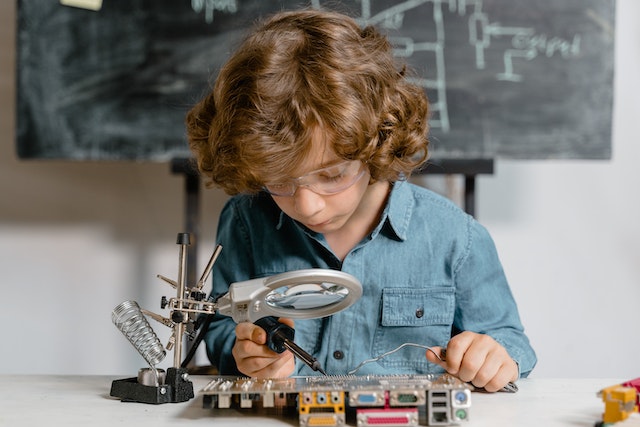Introduction: The “Dancing Raisins” experiment is a delightful and straightforward science activity that will captivate your child’s imagination while teaching them about buoyancy and gas formation. Using just a few household items, this experiment demonstrates the interaction between baking soda and vinegar, resulting in tiny raisins “dancing” in a glass of liquid. So, put on your scientist hats and let’s get started with this exciting science experiment!
Materials Needed:
- Clear glass or a transparent plastic cup
- Raisins (a small handful)
- Baking soda (1 teaspoon)
- White vinegar (approximately 1 cup)
- Tablespoon
- Measuring spoons
Step-by-Step Instructions:
Step 1: Set Up the Workspace Gather all the required materials and set up a clean and organized workspace on a table or kitchen counter. Ensure that your child can reach the experiment comfortably and safely.
Step 2: Add Raisins to the Glass Have your child place a small handful of raisins into the clear glass. Encourage them to observe the raisins and discuss their initial thoughts on what might happen when vinegar is added.
Step 3: Measure and Add Baking Soda Using a measuring spoon, instruct your child to add one teaspoon of baking soda to the glass with the raisins. Explain that baking soda is a powdery substance used in cooking and can react with vinegar.
Step 4: Pour in the Vinegar Next, pour the white vinegar into the glass, covering the raisins and baking soda. Observe your child’s reaction as the vinegar starts to fizz and bubble due to the chemical reaction with the baking soda.
Step 5: Watch the Magic Unfold As the vinegar reacts with the baking soda, it produces carbon dioxide gas. The tiny bubbles of gas attach to the raisins, causing them to rise and fall, creating a mesmerizing “dancing” effect. Encourage your child to describe what they see and ask questions about why the raisins are moving.
Step 6: Continue the Observation Let your child continue to watch the raisins dance in the glass for a few minutes. They can also gently stir the mixture to see if it affects the raisins’ movement.
Conclusion: The Dancing Raisins experiment offers a fantastic opportunity for hands-on learning and scientific exploration. Through this simple activity, children can observe the chemical reaction between baking soda and vinegar, while witnessing the concept of buoyancy in action. As a parent, you can extend the learning by explaining the science behind the experiment and discussing the role of carbon dioxide gas in the process. Most importantly, have fun together and encourage your child’s natural curiosity and wonder throughout the experiment. Happy dancing raisins and happy learning!

